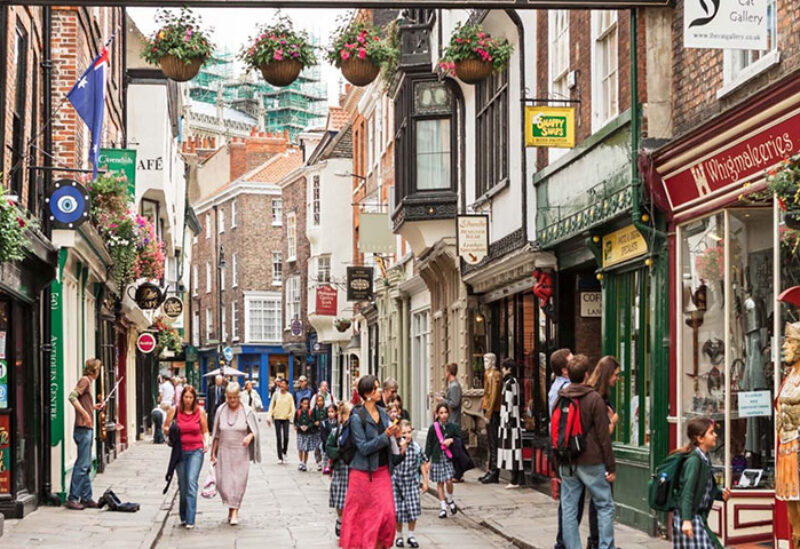
UK economy witnessed slight growth in June
Retail sales in the United Kingdom fell in December as a result of the fast spread of the Omicron form of coronavirus.
According to the Office for National Statistics, total sales volumes fell 3.7% in the last month of 2021, compared to a 1% increase in November, when customers snatched up early gifts for the holiday season amid the supply chain problems.
According to Heather Bovill, ONS deputy director for surveys and economic indicators, despite good pre-Christmas shopping in November, retail sales declined across the board in December, with shops reporting that Omicron had an impact on traffic.
“Because Plan B limits in England resulted in more people working from home, there was a significant drop in gasoline sales,” Ms Bovill continued.
“However, despite the December drop, retail sales are still higher than before the epidemic, with more than a quarter of transactions now occurring online.”
Fuel sales fell 4.7% in December compared to the previous month, and were 6.6% lower than pre-pandemic levels. Excluding fuel sales, the decline was focused in non-food businesses, which were down 7.1% month on month, with sales in clothes ‘other’ stores particularly low.
“December’s retail narrative was exactly what retailers didn’t want to hear. Clothing businesses, toy merchants, and other industries that often profit from Santa’s spending binge were particularly hard hit,” Danni Hewson, AJ Bell Financial Analyst, commented.
“Concerns about supply shortages prompted a drive to encourage consumers to spend early, and sales were up in October and November, but comparing the last three months of the year to the preceding three months would make for uncomfortable reading for shops (Q4 0.2 percent lower than Q3).”
Economists said the magnitude of the blow increased their forecasts that the world’s fifth-largest economy contracted last month, with Bethany Beckett forecasting a 0.5% decline in December or potentially more.
Retail sales are likely to rebound between January and March, with the government easing Covid restrictions next week as Omicron retreats.
“Concerns about supply shortages prompted a drive to encourage consumers to spend early, and sales were up in October and November, but comparing the last three months of the year to the preceding three months would make for uncomfortable reading for shops (Q4 0.2 percent lower than Q3).”
Economists said the magnitude of the blow increased their forecasts that the world’s fifth-largest economy contracted last month, with Bethany Beckett forecasting a 0.5% decline in December or potentially more.
Retail sales are likely to rebound between January and March, with the government easing Covid restrictions next week as Omicron retreats.
“With the UK’s cost of living problem approaching,” Beckett added, “we expect a slowdown in the consumer recovery to affect retail sales further ahead.”
Inflation rose to 5.4 percent in December, driven by rising energy prices, wiping out a 3.8 percent increase in average wages in the three months to November compared to the same time in 2020.
Along with the potential of increasing interest rates and a tax increase in April, consumers’ willingness to continue spending in 2022 will be tested.
As a result, the Bank of England was still on track to raise interest rates for the second time in two months in February, according to Beckett, raising the rate to 0.5 percent from 0.25 percent on February 3.
But it wasn’t all doom and gloom in December, with grocers more resilient as they snatched up consumers who’d canceled restaurant reservations in favor of a Christmas blowout at home. However, sales were 1% lower than in November, despite volumes being 2% higher than in February 2020.
The proportion of retail transactions made online increased slightly in December to 26.6 percent from 26.3 percent in November, far higher than the 19.7 percent reported in February 2020.
Although footfall on the high streets increased again in the week ending January 15, it was only by 2%, following three weeks of declines. According to Susannah Streeter, senior investing and markets analyst at Hargreaves Lansdown, overall retail traffic is still 79 percent lower than in 2019.
“Even once plan B limits are lifted, the number of shoppers in high streets and city center locations is unlikely to return to pre-pandemic levels, given that hybrid working is quickly becoming the norm and family budgets are tightening,” Streeter noted.
“Already, two-thirds of people believe that the cost of living has risen in the last four weeks, and with further energy price increases on the horizon, there are sure to be much fewer shoppers happily spending the cash in the months ahead.”